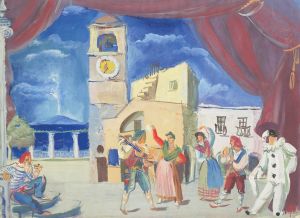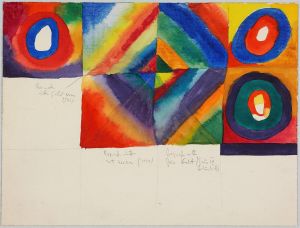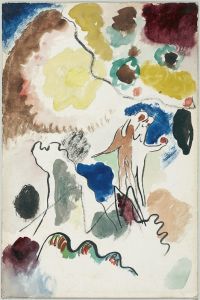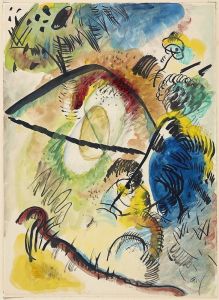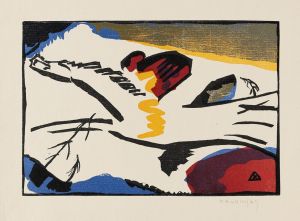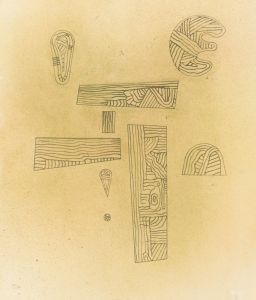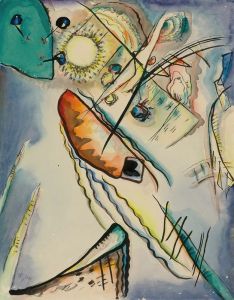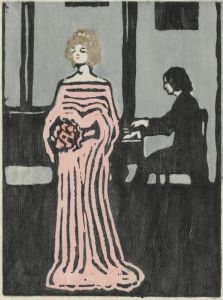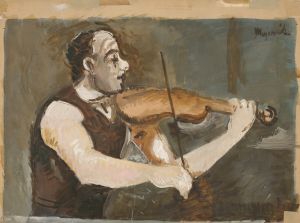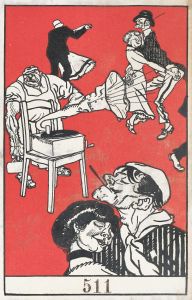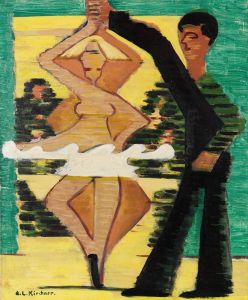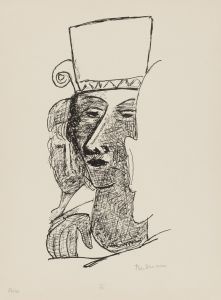
Klänge Pl.25
A hand-painted replica of Wassily Kandinsky’s masterpiece Klänge Pl.25, meticulously crafted by professional artists to capture the true essence of the original. Each piece is created with museum-quality canvas and rare mineral pigments, carefully painted by experienced artists with delicate brushstrokes and rich, layered colors to perfectly recreate the texture of the original artwork. Unlike machine-printed reproductions, this hand-painted version brings the painting to life, infused with the artist’s emotions and skill in every stroke. Whether for personal collection or home decoration, it instantly elevates the artistic atmosphere of any space.
Wassily Kandinsky, a pioneering figure in abstract art, created "Klänge Pl.25" as part of his broader exploration into the relationship between color, form, and emotion. Kandinsky, born in Moscow in 1866, was a key figure in the development of modern art, and his works are often associated with the expression of spirituality through abstract forms. His contributions to art theory and practice have been influential in shaping the course of 20th-century art.
"Klänge" (meaning "Sounds" in German) is a collection of woodcuts and prose poems published by Kandinsky in 1913. This work is significant as it represents one of the earliest examples of a complete synthesis of visual art and poetry, reflecting Kandinsky's belief in the interconnectedness of different art forms. The collection includes 56 woodcuts and 38 prose poems, each complementing the other to create a multisensory experience.
"Klänge Pl.25" is one of the woodcuts from this collection. While specific details about this particular plate are limited, the woodcuts in "Klänge" generally exhibit Kandinsky's transition from figurative to abstract art. The imagery in these woodcuts often features bold lines, dynamic compositions, and a departure from realistic representation, embodying Kandinsky's theories on the spiritual and emotional power of abstract forms.
Kandinsky's work during this period was heavily influenced by his theoretical writings, particularly "Concerning the Spiritual in Art," published in 1911. In this text, Kandinsky articulated his belief that art should transcend mere representation and evoke a deeper, spiritual response in the viewer. He argued that colors and forms could be used to express emotions and ideas, independent of the material world. This philosophy is evident in the abstract nature of the woodcuts in "Klänge," including "Pl.25."
The woodcuts in "Klänge" are characterized by their use of simplified forms and a limited color palette, often employing black and white to emphasize contrast and composition. This approach reflects Kandinsky's interest in the expressive potential of line and form, as well as his desire to strip away unnecessary details to focus on the essence of the subject.
Kandinsky's work in "Klänge" and other projects during this time contributed significantly to the development of abstract art. His exploration of non-representational forms and his emphasis on the emotional and spiritual dimensions of art paved the way for future movements such as Abstract Expressionism. Kandinsky's influence can be seen in the works of later artists who sought to explore the possibilities of abstraction and the expressive potential of color and form.
In summary, "Klänge Pl.25" is part of a groundbreaking collection by Wassily Kandinsky that exemplifies his innovative approach to art and his commitment to exploring the spiritual and emotional power of abstract forms. Through his work, Kandinsky challenged traditional notions of representation and laid the foundation for the development of modern abstract art.





